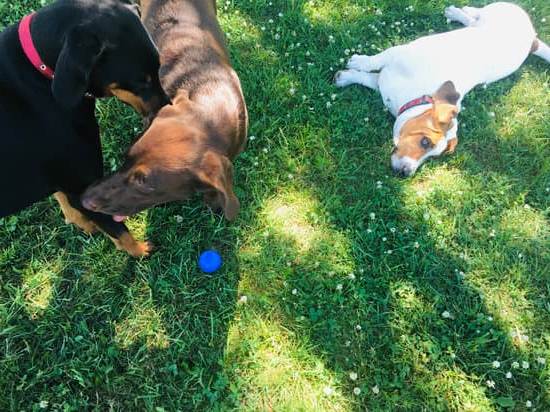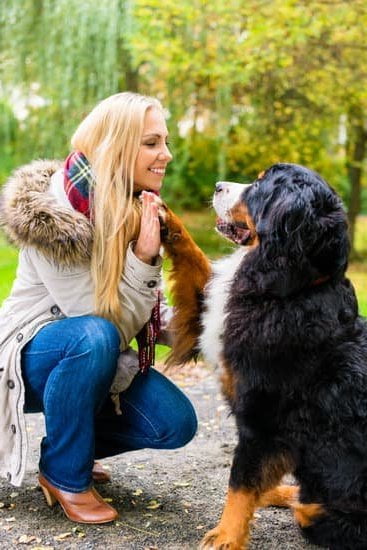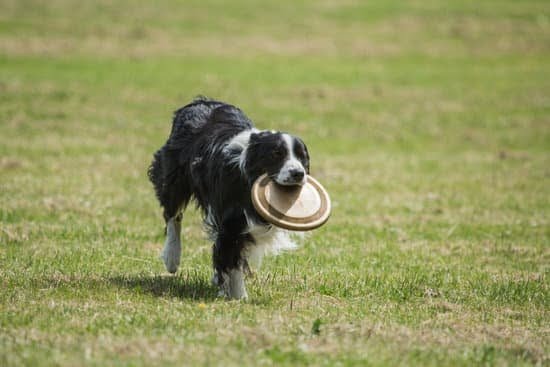Are you wondering how to train your dog to poop indoors? While traditional dog training methods usually focus on outdoor potty habits, there are times when indoor potty training might be necessary for some dogs. In this article, we will explore the reasons why indoor potty training may be needed and provide you with effective methods and techniques to successfully train your dog to poop indoors.
For some dog owners, indoor potty training is a practical solution due to various reasons such as living in high-rise buildings, extreme weather conditions, physical limitations, or health concerns. Understanding the need for indoor pooping can help determine if this method is suitable for your situation. Whether you are a new dog owner or looking for alternative potty training options, it’s essential to know the steps and techniques to effectively train your dog to poop inside your home.
In this section of the article, we will cover the importance of understanding the need for indoor pooping and how it can benefit both you and your furry companion. We’ll delve into the reasons why indoor potty training might be necessary for some dogs and provide tips on how to prepare your home for this unique approach.
By gaining a deeper understanding of indoor pooping needs, you can create a successful training plan that ensures a happy and healthy environment for both you and your pet.
Why Indoor Potty Training Might Be Necessary for Some Dogs
Indoor potty training may be necessary for some dogs due to various reasons. Some dogs may have health issues that prevent them from being able to go outside to relieve themselves. For example, senior dogs with mobility issues or puppies who haven’t completed their vaccinations may not be able to go outside safely. In these cases, indoor potty training can provide a solution.
Another reason indoor potty training might be necessary is the living situation of the dog and its owner. For individuals who live in high-rise apartments or urban areas where outdoor space is limited, indoor potty training can be a more practical option. Additionally, extreme weather conditions such as heavy rain, snow, or hot temperatures can make outdoor potty breaks challenging for both the dog and its owner.
Furthermore, some dogs may have behavioral issues or fear of going outside that make outdoor potty training difficult. This could be due to past trauma or lack of exposure to outdoor environments during critical developmental periods. In such cases, indoor potty training can provide a temporary solution while working on addressing the underlying behavioral concerns with the help of a professional trainer or behaviorist.
- Health issues preventing outdoor access
- Limited outdoor space in living environment
- Extreme weather conditions
- Behavioral issues or fear of outdoors
Steps to Prepare Your Home for Indoor Potty Training
Preparing your home for indoor potty training is an important step in successfully training your dog to poop indoors. One of the first things you need to do is to designate a specific area in your home where your dog will be allowed to go potty.
This should be a quiet, low-traffic area that is easily accessible to your dog. It’s important to choose a spot that is easy to clean and maintain, such as a bathroom, laundry room, or enclosed porch.
Once you have chosen the indoor potty spot for your dog, you will need to set it up with the right supplies. This typically includes puppy pads, artificial grass, or even a designated indoor potty box.
You may also want to consider using attractant sprays or gels specifically designed to encourage dogs to go potty in a specific area. It’s important to keep in mind that the goal is to create an appealing and convenient potty area for your dog while minimizing mess and odor in your home.
In addition to preparing the physical space for indoor potty training, it’s crucial to establish a consistent routine for your dog. This means setting regular potty times throughout the day and being attentive to signs that indicate when your dog needs to relieve themselves. By creating a predictable schedule and paying attention to your dog’s behavior, you can help them adjust to using an indoor potty area more effectively.
| Indoor Potty Training Supplies | Tips for Creating a Routine |
|---|---|
| Puppy pads | Establish regular potty times |
| Artificial grass | Be attentive to signs of needing relief |
| Attractant sprays or gels | Consistency is key for successful training |
Choosing the Right Indoor Potty Spot for Your Dog
When it comes to indoor potty training for your dog, choosing the right spot for them to do their business is crucial. The chosen spot should be conducive to your dog’s needs and should also be easily accessible for both you and your pet. Here are some important factors to consider when selecting the perfect indoor potty spot for your dog:
Accessibility and Convenience
The chosen indoor potty spot should be easily accessible to your dog at all times. Whether it’s a designated area in the bathroom or a specific spot in the laundry room, make sure that it is convenient for your pet to reach whenever they need to relieve themselves. Additionally, consider accessibility for yourself as well, ensuring that clean-up and maintenance will be hassle-free.
Odor Control
It’s important to choose an indoor potty spot that can help control odors effectively. Consider using odor-absorbing materials such as artificial grass or pee pads that can minimize any lingering smells in your home. Regular cleaning and deodorizing of the area will also help keep odors at bay.
Dog Preferences
Take into account your dog’s preferences when choosing the indoor potty spot. Some dogs may prefer a more private area, while others may feel more comfortable with an open space. Observe your pet’s behavior and choose a spot that aligns with their preferences in order to encourage successful indoor potty training.
By considering these factors, you can select the ideal indoor potty spot for your dog, setting them up for successful indoor potty training in the comfort of your home.
Effective Indoor Potty Training Methods and Techniques
When it comes to indoor potty training for your dog, there are several methods and techniques that you can use to encourage and teach your furry friend to do their business inside the house. Here are some effective methods and techniques to consider:
1. Crate Training: Utilizing a crate can be an effective method for indoor potty training. Dogs have an instinct to not soil their sleeping area, so using a crate can help them learn to control their bladder and bowels. When using this method, it’s important to ensure that the crate is not too large for your dog, as they may designate one side as a potty spot.
2. Puppy Pads or Indoor Grass Potties: For dogs who are unable to go outside due to health reasons or extreme weather conditions, puppy pads or indoor grass potties can be a useful tool for indoor potty training. These products are designed to mimic the outdoor environment and can help teach your dog where it’s acceptable to relieve themselves indoors.
3. Verbal Commands and Positive Reinforcement: Using verbal commands such as “go potty” when you take your dog to their designated indoor spot can help them associate the command with the action of relieving themselves. Additionally, positive reinforcement in the form of treats or praise when they successfully use the indoor potty spot can reinforce this behavior.
These methods and techniques may require time, patience, and consistency, but with the right approach, you can effectively train your dog to poop indoors when necessary.
Encouraging and Rewarding Your Dog for Pooping Indoors
Consistency is key when it comes to rewarding your dog for pooping indoors. Make sure to praise and reward them each time they use the indoor potty spot effectively. This will reinforce the behavior and help them understand that this is the desired behavior. Additionally, consider using a special phrase or command whenever your dog goes to the bathroom indoors. Over time, they will associate this command with the action of pooping in the designated spot.
In addition to verbal praise and treats, another effective way to reward your dog for pooping indoors is through playtime or a short walk after they’ve finished. This positive reinforcement can strengthen the bond between you and your furry friend while also encouraging them to continue using their indoor potty area appropriately.
| Indoor Potty Training Rewards | Positive Reinforcement Techniques |
|---|---|
| Praise | Verbal praise and pets |
| Treats | Small treats as rewards |
| Playtime or Walks | Additional rewards after successful indoor pooping |
Dealing With Accidents and Setbacks in Indoor Potty Training
Accidents are an inevitable part of the indoor potty training process, especially during the initial stages. It’s important to remember that dogs may take some time to adjust to the new routine, so setbacks should be expected. The key is to remain patient, consistent, and understanding throughout the training process.
Understanding Accidents
Accidents can happen for various reasons, including a change in schedule, stress, or confusion about the designated potty spot. It’s crucial not to scold or punish your dog for accidents, as this can create anxiety and fear, hindering the training progress. Instead, focus on identifying the cause of the accident and making adjustments to prevent it from happening again.
Addressing Setbacks
If you notice your dog having frequent accidents indoors despite consistent training efforts, consider revisiting some of the previous training steps. Reassess your dog’s potty schedule, the accessibility of the indoor potty spot, and any changes in their behavior or environment that may be contributing to setbacks.
Additionally, consulting with a professional dog trainer or behaviorist can provide valuable insights and guidance on how to address specific challenges in indoor potty training. Remember that setbacks are normal and part of the learning process for both you and your dog as you work towards successful indoor potty training.
By remaining patient and proactive in addressing accidents and setbacks during indoor potty training, you can help your dog adapt to this new routine effectively. Consistency, positive reinforcement, and a supportive environment are essential factors in creating a successful indoor potty training plan for your furry companion.
Maintenance and Clean-Up Tips for Indoor Dog Pooping Areas
Maintaining a clean indoor dog pooping area is essential to ensure the success of indoor potty training. Accidents can happen, and it’s important to have a plan in place for cleaning up after your dog. One of the first steps in maintenance is to regularly check and clean the designated indoor potty spot. This can be done by removing any solid waste and using a pet-friendly disinfectant to clean the area.
In addition to regular cleaning, it’s important to have the right supplies on hand for accidents. Stock up on paper towels, pet stain and odor remover, as well as disposable gloves for handling waste. Keep these supplies easily accessible near your indoor potty spot so that you can quickly address any accidents that occur.
For fabrics or carpets that may have been soiled by your dog, it’s important to use a pet-specific stain and odor remover. This will help eliminate any lingering odors that could attract your dog back to the same spot for future accidents. It’s also important to thoroughly clean and disinfect any surfaces where accidents occur to prevent lingering odors and potential repeat incidents.
By maintaining a clean indoor potty area, you are not only providing a hygienic environment for your dog but also setting them up for success in their indoor potty training journey. Consistency in cleaning and upkeep will help reinforce good habits in your dog while minimizing the chances of accidents occurring in the future.
Conclusion
In conclusion, indoor potty training may not be the conventional method for dogs, but it can be a necessary and practical solution for certain situations. Understanding the need for indoor pooping is the first step in creating a successful training plan for your dog. Whether it’s due to extreme weather conditions, living in an apartment, or your dog’s age or health issues, there are valid reasons why indoor potty training might be the best option.
Preparing your home for indoor potty training and choosing the right spot are crucial steps in the process. Once these initial steps are completed, it’s important to use effective indoor potty training methods and techniques to teach your dog where they are allowed to go. Consistency, patience, and positive reinforcement are key components in this process, as well as understanding that accidents and setbacks are normal during this learning phase.
Furthermore, encouraging and rewarding your dog for pooping indoors and dealing with accidents diplomatically will contribute to a successful indoor potty training plan. Maintenance and clean-up tips for the designated indoor dog pooping areas will also help keep your home clean and odor-free. With these strategies in place, creating a successful indoor potty training plan for your dog will result in a happier living environment for both you and your furry friend.
Frequently Asked Questions
How Do I Train My Dog to Poop Inside?
Training a dog to poop inside is generally not recommended, as it goes against their natural instinct to do their business outside. However, if the situation requires it, you can use indoor potty training pads or a designated litter box area for your dog to use.
Consistent positive reinforcement and taking them to the designated area at regular intervals can help them understand where they should go.
What if My Dog Doesn’t Want to Poop Indoors?
If your dog doesn’t want to poop indoors, that’s actually a good thing as it’s much more preferable for them to do their business outside. It’s important to encourage and praise your dog when they go potty in the appropriate outdoor locations.
Trying to force or train a dog to poop indoors can lead to confusion and behavioral issues.
Why Does My Dog Poop in the House After Going Outside?
There are several reasons why a dog may still poop in the house after going outside. It could be due to incomplete house training, a medical issue like diarrhea or other digestive problems, anxiety or stress, territorial marking behavior, or even lack of proper outdoor bathroom opportunities.
It’s important to identify the underlying cause and address it accordingly through proper training, consistency, and possibly consulting with a veterinarian if necessary.

Welcome to the blog! I am a professional dog trainer and have been working with dogs for many years. In this blog, I will be discussing various topics related to dog training, including tips, tricks, and advice. I hope you find this information helpful and informative. Thanks for reading!





